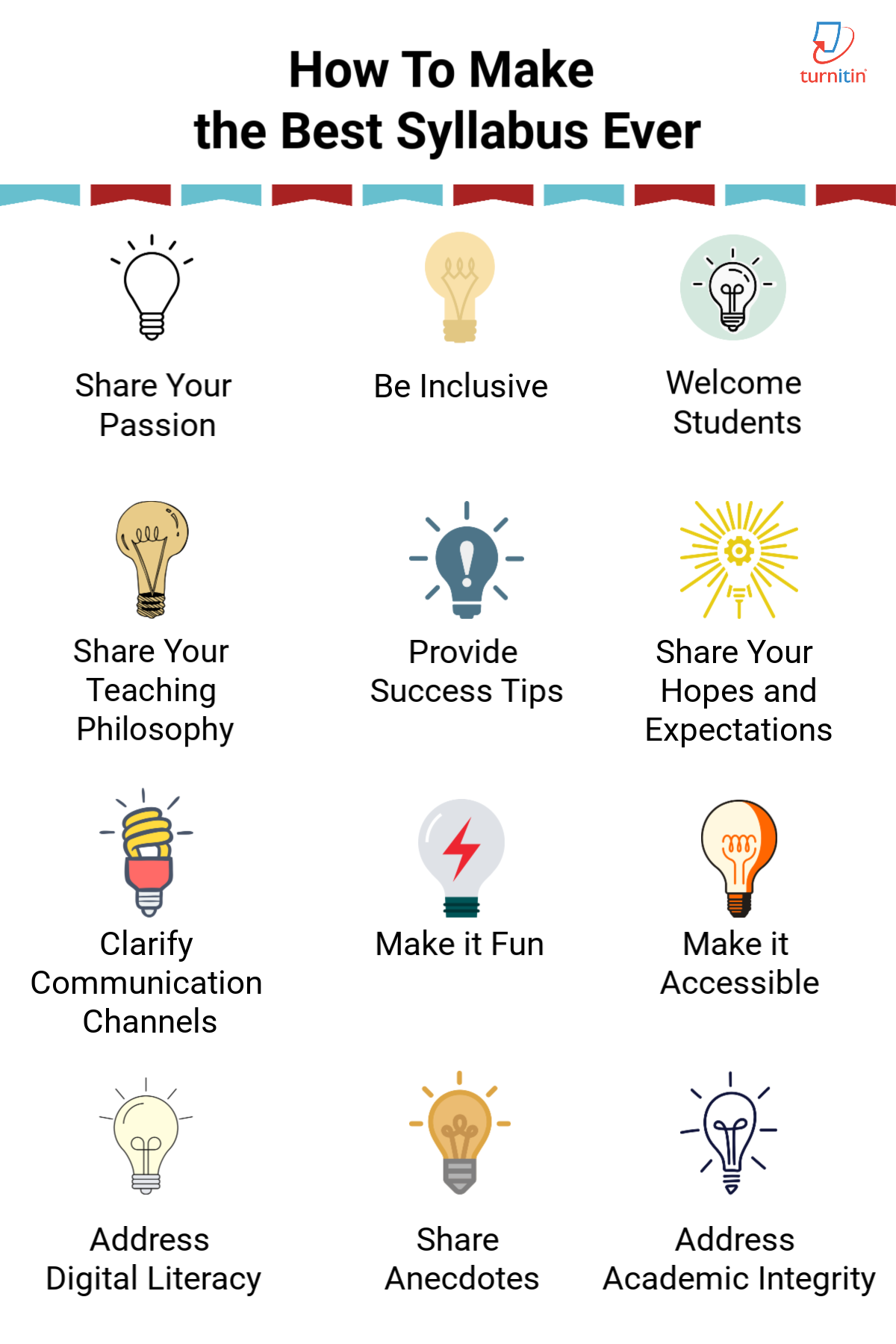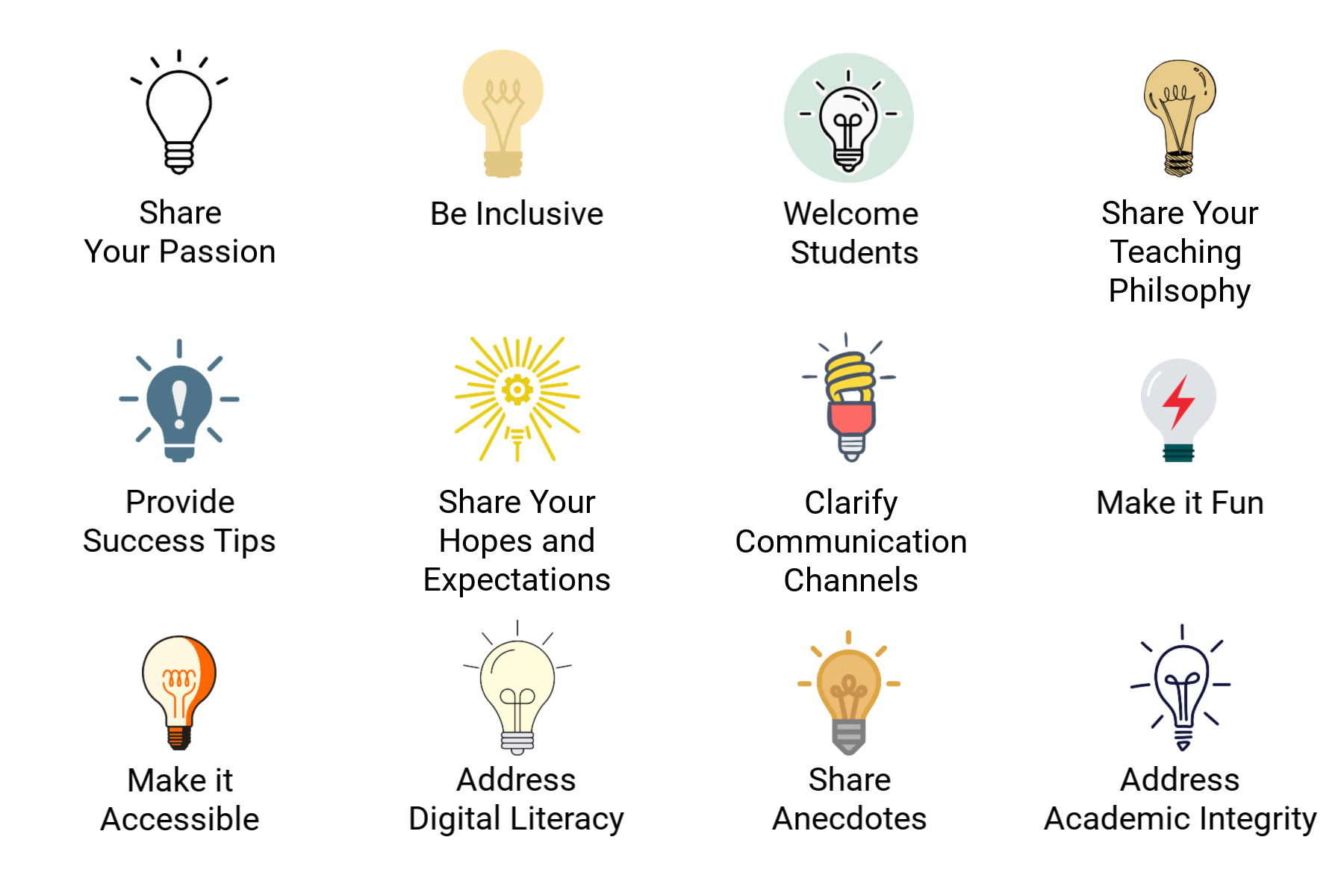The basic requirements of a syllabus are to communicate information clearly and provide students and teachers with a basic contract regarding class content and happenings.
This can make for a very dry and impersonal syllabus--but why not leverage this important document into a relationship-building tool? Why not make your syllabus the best syllabus you’ve written? Educators love sharing syllabi because we know that there’s always room for improvement. So in this blog post, we’re going to share some tips on how to make your syllabus the best syllabus ever.
For many students, an impassioned syllabus can be both refreshing and groundbreaking. An immediate relationship forms when a student reads a syllabus that only that particular educator could have written. These syllabi can be legendary, as David Foster Wallace’s syllabus for his undergraduate nonfiction course has become. But what they all can be is the first step towards relationship building and setting a tone for your classroom that can carry throughout the semester.
And also--such a syllabus can make students read the syllabus (how many of us wish we had a nickel for every time we have said, “It’s in the syllabus?”)
Let’s go over some basics. First, a syllabus should address the following components of a course or class (items unique to Higher Education are in italics):
- Your name (and the way you’d like for students to address you), contact information (email, phone number), office hours
- Course name, course number, days + times + location the course meets
- Course description
- Objectives/Learning Outcomes
- What should the student understand after taking this course?
- Prerequisites (if any)
- Courses that must be completed before taking this course
- Course requirements
- What students need to complete the course
- Required texts
- Grading Policy/Assignments
- How will students be graded? What are your course’s major assignments? What percentage of the grade will assignments encompass? Or will you be using a points system? Will there be tests or quizzes? A final portfolio? A written exam?
- Attendance Requirements
- How will late/tardy/absent/early departures be addressed? What defines an excused absence vs an unexcused absence? Make sure your policy aligns with your institution's policy, but also feel free to make clear what impacts absences would have on student performance.
- Academic Procedures
- How will assignments be submitted and returned? Will they be assessed via Feedback Studio, Gradescope, an LMS, or hard copies? What is your policy on late work, extensions, and resubmissions?
- Academic Integrity Statement
- What is your policy on plagiarism? How do you define academic integrity? There is also an opportunity to imbue academic integrity throughout your syllabus as well.
- Accommodations
- Does your school have a student disability support office? What is its contact information?
- Course Schedule
- Not a requirement, but definitely a nice to have on the syllabus so that students can have an idea of what’s ahead and so you can set expectations. You may want to write “subject to change” so you can afford yourself some flexibility, as well.
There are ways to enrich your course syllabus, too. A syllabus doesn’t have to end at the above sections. And a syllabus doesn’t have to be cut and dry, even if you’re working within the above structure.

- Even within the course description, there’s space to supplement with your anecdotes. You may want to share your passion for the subject area you teach. Why do you teach this subject? Why do you think your subject area is of significance? Chances are, if you are passionate about your academic subject area and share a story or credo--and write it down on the syllabus--students’ interest may also be piqued.
- Why do you agree and promote student learning outcomes as stated? What do you hope students will do go forward after achieving such outcomes?
- How will your class be held? What is the tone of the class--will you be exploring via group discussion? And if so, what is productive discussion? Will there be group work? What is your expectation there? Have you defined collusion vs collaboration? Will you provide scaffolding to promote discussion for those who are more shy about sharing knowledge? These concepts can be addressed under the course description.
- It’s important to make your syllabus inclusive. Word has a “Check Accessibility” function under the “Tools” bar that can ensure students with a disability won’t have difficulty reading your document. In addition to accommodations for students with disabilities, think of other campus resources to list on your syllabi. The campus food pantry, for example, or the counseling center. You may include this under Accommodations or a new Campus Resources section.
- Consider a “Who You Are” section to welcome students to approach you with pronouns or a name other than the one listed on the class roster.
- If your syllabus is for higher education, make your office hours welcoming. It doesn’t have to be more than a line or two, but let students know for what they can come to you for discussion. You’ll be surprised at how the number of office visits can grow with increasing transparency, thereby upholding academic integrity and supporting student success. (As well as making your office hours a whole lot less humdrum)!
- Additionally, communication channels are increasing with digital literacy. Aside from office hours, how would you like students to communicate with each other? Or with you? Do you prefer email? An LMS? Is there a class blog?
- Speaking of digital literacy--you may want to offer an electronic device policy in your syllabus. What is your policy on electronic devices such as phones, tablets, and laptops in your classroom? Will you make exceptions for students with accommodations?
- While student learning outcomes are an administrative requirement, you may supplement with your own expectations for the class. What are your personal expectations for student learning? This is also a place for your personal expectations for courtesy within the classroom, especially if classroom discussion is expected. How do you expect students to speak up? What if students disagree with each other? What are some turns of phrase that may enable them to show respect during disagreements? What is your teaching philosophy?
- Because students come to us from all walks of life, they also come to our classrooms with differing skills. So--what does it take for a student to be successful in your particular classroom? This is a great opportunity to offer study tips as well as note-taking tips.
- And particularly for higher education: a food and drink policy may also be necessary. Classes may be held during the lunch or dinner hours and students may not have had an ample break to eat or drink between classes. That said, if you do not want food or drink in your classroom, you may want to note that in your syllabus. Or if you do allow it, are there courtesy limits to food (e.g., noisy food or foods to which people might be allergic, like peanuts)?
- And just to make things fun--here’s a bonus: an infographic syllabus, so your syllabus can stick out from the stacks of paper at the beginning of an academic term.
We hope this post gives you some ideas on how to make your syllabus the best it can be. At Turnitin, we sincerely believe that teacher-student relationships and communication are key to both academic integrity and academic success.




